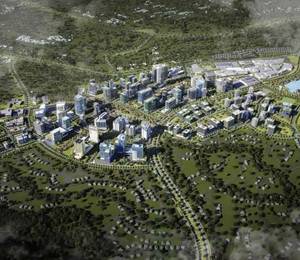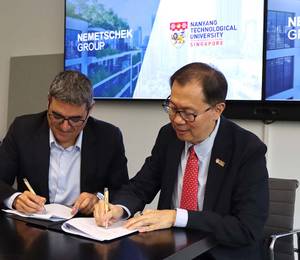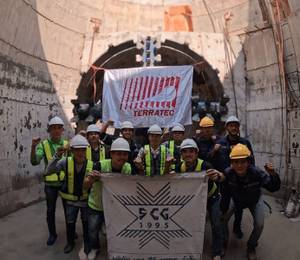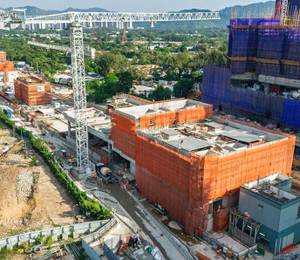Nanyang Technological University, Singapore (NTU Singapore) has officially opened its eighth zero-energy building. Named Gaia after the Greek goddess of earth, this six-storey development is dubbed the largest wooden building in Asia. It is home to the Nanyang Business School (NBS), covering 43,500 sq m of gross floor area.
The new facility is built using mass engineered timber (MET). This green technology was first adopted for the construction of NTU’s mega sports hall, The Wave, launched in 2017. The two buildings are the works of Japanese architect Toyo Ito.
As the name suggests, Gaia is constructed with sustainability in mind. According to NTU, compared to a normal building, Gaia produces about 2,500 fewer tonnes of carbon dioxide (CO2) per year – equivalent to more than 7,000 roundtrip flights from Singapore to Hong Kong.
The emission reduction is achieved through energy efficient systems and renewable technologies. The timber used for the construction of Gaia was sourced from sustainably managed forests, which means new trees are planted to replace those that are harvested, explained NTU. The carbon offset from planting trees to replace those used in Gaia totals 5,800 t of CO2 – same as the carbon footprint of about 17,000 return flights between Singapore and Hong Kong.
NTU also revealed that solar photovoltaic (PV) panels installed on the rooftop churn out 516,000 kWh of clean energy to power the building annually – enough to power 169 three-room HDB flats for a year. Instead of fans, Gaia has sun shading fins along parts of its facade and incorporates extensive open areas, terraces, and air wells to increase ventilation.
Its air-conditioning system saves energy by using passive cooling coils to chill the air without the use of fans (passive displacement ventilation), added NTU. These coils work by creating a natural convection cycle, cooling the air as it sinks downwards, which displaces the warm air upwards.
Furthermore, external facade bricks from the NTU Innovation Centre, which previously stood at where Gaia is located, were preserved, and re-used to build a decorative wall in the building, in a nod to the university’s heritage.
Gaia is the eighth building project on the NTU campus that has received the Green Mark Platinum (Zero Energy) – the highest award issued by the Building and Construction Authority of Singapore (BCA) to recognise buildings that consume as much energy as they produce. Presently, there are 16 certified zero-energy buildings in the country, of which half are located on NTU grounds. This makes NTU the greenest campus in Singapore.
NTU said plans for sustainability related programmes in Gaia are underway, in collaboration with industrial collaborators, to inspire more to learn and live sustainably through an in-person experience. All of Gaia’s classrooms and laboratories are also equipped with the latest technologies, as part of the university’s Smart Campus initiative.
Singapore’s Minister for Education, Chan Chun Sing, who was guest-of-honour at the opening ceremony, pointed out that “as part of the Singapore Green Plan 2030, our Institutes of Higher Learning (IHLs) play an important role in making sustainability a competitive advantage for Singapore. Gaia is a testament of NTU’s continued efforts to be a leading sustainable university. I look forward to more innovations from the community, as we all do our part to create a sustainable future.”
“Gaia is an integral part of NTU’s commitment to sustainability,” stressed Prof Ho Teck Hua, president of NTU, as he concluded his speech. “It demonstrates an innovative approach to creating a sustainable urban environment. We hope it will serve as an inspiration to many others.”
All images: NTU Singapore















